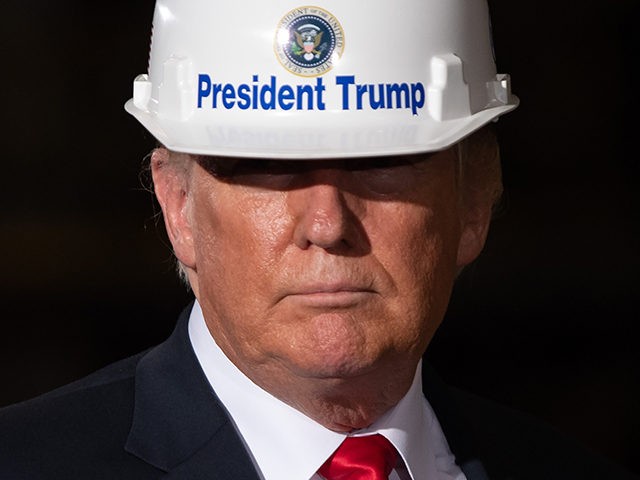A measure of U.S. business prices unexpectedly dropped in August, the latest sign that trade disputes and rising tariffs are not creating significant inflation pressures in the economy.
The producer-price index, which measures prices domestic U.S. businesses receive for their goods and services, fell a seasonally adjusted 0.1 percent in August from a month earlier, the Labor Department said Wednesday. This is the first monthly decline since the 0.1 percent drop in February 2017.
Economists had forecast a 0.2% increase.
Many economists have been predicting that rising U.S. tariffs would drive prices higher for U.S. consumers, with some describing tariffs as a “tax on consumers.” The PPI data suggest that businesses are paying higher prices for some materials but are not passing those price hikes on to consumers.
The report adds credibility to the Fed’s view that tariffs are not yet driving up consumer prices.
Prices lower down in the production chain of materials and components that go into making final goods that get sold to the consumer have risen, although recent data show that rise has moderated or reversed. Steel mill products, for example, are up 18.8 percent compared with a year ago and 2.6 percent for the month.
Alan Tonelson explains that the year-over-year gain reflects that effect tariffs have had on cutting down on anticompetitive dumping of foreign metals on the U.S. market:
A year ago, steel and aluminum products were being massively dumped into the U.S. market. That is, thanks to foreign government subsidies, they were artificially low, and by definition had little or nothing to do with free market forces. Naturally, metal-users liked this situation. But is this how we want the American economy to run? On the basis of addiction to foreign government decisions?
But even those price hikes are not necessarily reaching consumers. As products move up the production chain, the price hikes are whittled down.
Prices of intermediate processed goods, which include the products of steel and aluminum mills, are up 6.3 percent compared with a year ago. But these prices fell 0.1 percent in August compared with July.
Prices of materials used in durables manufacturing—which are those most likely to be affected by the tariffs on steel and aluminum—are up 9.5 percent compared with a year earlier. But most of the increase came earlier in the year. And in August, prices fell. Prices of components for durables manufacturing rose just 2.3 percent for the year and were up just 0.1 percent in August.
Prices of household appliances are up just 2.8 percent compared with a year ago—and these fell 0.1 percent in August. Car prices are up 2.0 percent on an annual basis, down 0.1 percent for the month. Light trucks—which include pickups and many sports utility vehicles—were up just 1.0 percent annually, and down 0.6 percent for the year.
The lack of transmission through the chain of production suggests that it is wrong to assume that consumer prices are determined by businesses setting their price as a markup over production cost. If that were the case, the prices on final goods included in the PPI would move up when intermediate materials prices move up. Given muted wage increases over the last several years, as well as an increase in inequality that has seen much of the economic gains in recent decades concentrated with the very wealthy, it may not be possible for businesses to pass on higher costs. Consumers cannot afford to pay more.
Instead, it appears that the markups are falling—reducing profit margins of American businesses. These have been bolstered, however, by very significant cuts in the tax rates paid by American businesses. Tariffs may simply be offsetting some of the profit gains from tax cuts.
The PPI data for August went in the opposite direction of other recently reported measures of inflation. The personal-consumption-expenditures price index, the Federal Reserve’s favored measure of inflation, rose 2.3% in July from the prior year.

COMMENTS
Please let us know if you're having issues with commenting.